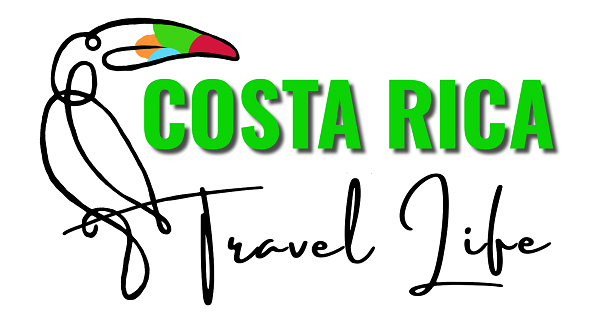This blog may contain affiliate links. Read our disclosure policy for more info.
It’s well established that Costa Rica is a true paradise for nature lovers. In fact, it’s the most biodiverse country on Earth! So really, it should come as no surprise that in addition to the amazing birds, mammals, and reptiles, this country is also home to some incredibly vibrant marine life, making snorkeling one of those must-do activities in Costa Rica.
Costa Rica has over 1,280 km (800 miles) of coastline and is home to more than 7,000 marine species. That represents 3.5% of all marine creatures on the planet, which is a huge percentage when you consider how small the country is.
You’ll also find that Costa Rica’s two coastlines offer different snorkeling experiences. Generally speaking, the Pacific Coast has more accessible snorkeling spots, especially around its beautiful islands. Meanwhile, the Caribbean side is more remote but typically has stronger currents and more colorful fish.
We’ve traveled all around Costa Rica, and we did a ton of snorkeling along the way. It’s one of those experiences that needs to be on any Costa Rican trip itinerary and I promise it’s easy to do, even if you’ve never snorkeled before!
We’ve picked the 8 most spectacular snorkeling spots in the country and have all of the need-to-know info so that you can find the perfect spot for your own snorkeling adventure.
When is the best time to snorkel in Costa Rica?

When you’re figuring out when to visit Costa Rica, it’s best to go snorkeling during the dry season. This time of year offers much better visibility. During the wet season, the rain can make the water murky, and cloudy skies make it more difficult to see underwater.
On the Pacific Coast, the dry season lasts from December to April, but the Caribbean side doesn’t actually have a clear-cut wet or dry season – it’s wet all year round! But generally speaking, September and October receive the least rainfall, so those months are the best time to snorkel on that side of the country.
What are you most likely to see snorkeling in Costa Rica?

As we’ve mentioned, Costa Rica hosts a ton of amazing marine life. We won’t list all 7,000 species, but some of the highlights include sea turtles, dolphins, eels, manta rays, and a TON of tropical fish. We’re talking parrotfish, barracudas, clownfish, and so much more. And of course, you’ll see lots of vibrant coral, too.
When we went snorkeling in Costa Rica, we mainly saw reef sharks, turtles, puffer fish, corals, and too many tropical fish to count. It really was amazing!
8 Best Places to go Snorkeling in Costa Rica
1. Caño Island

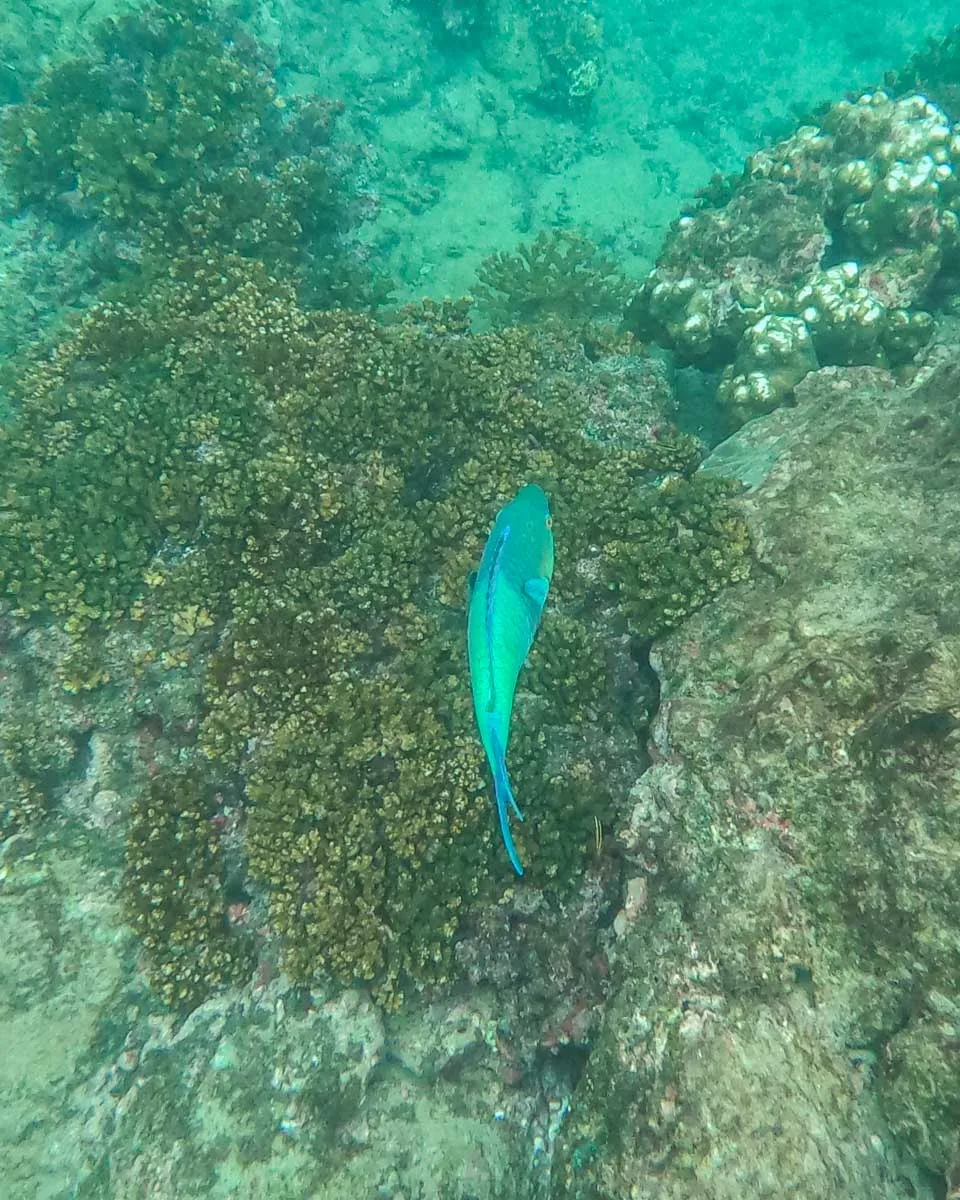
You can’t actually set foot on Caño Island itself, but Caño Island Biological Reserve is one of the best places to go snorkeling in Costa Rica.
This protected area is one of the best nature reserves in Costa Rica and is known for great underwater visibility as diverse marine life, including white-tip reef sharks, eels, puffer fish, and manta rays. We had an absolute blast snorkeling here!
Caño Island can be found just off the Osa Peninsula on Costa Rica’s Pacific Coast. The biological reserve is accessible by boat from either Uvita, Sierpe, or Drake Bay, which is where we went from. We booked our tour through Hotel Rancho Corcovado and visited two sites, where we saw lots of incredible marine life.
If snorkeling around Caño Island is on your bucket list, I suggest finding a place to stay in Drake Bay. It’s a good base to explore the area and also take in this 6-hour snorkeling tour. It includes two snorkeling dives which are handy if you’re just learning. It’s a small group with a max of 8 people, guides to help you learn the ropes, and a yummy lunch to enjoy once you’re back. All for around $113 USD which is a pretty good deal if you ask us!
We found that Caño Island definitely lives up to its reputation as one of – if not the – best places to go snorkeling in Costa Rica.
2. Tortuga Island
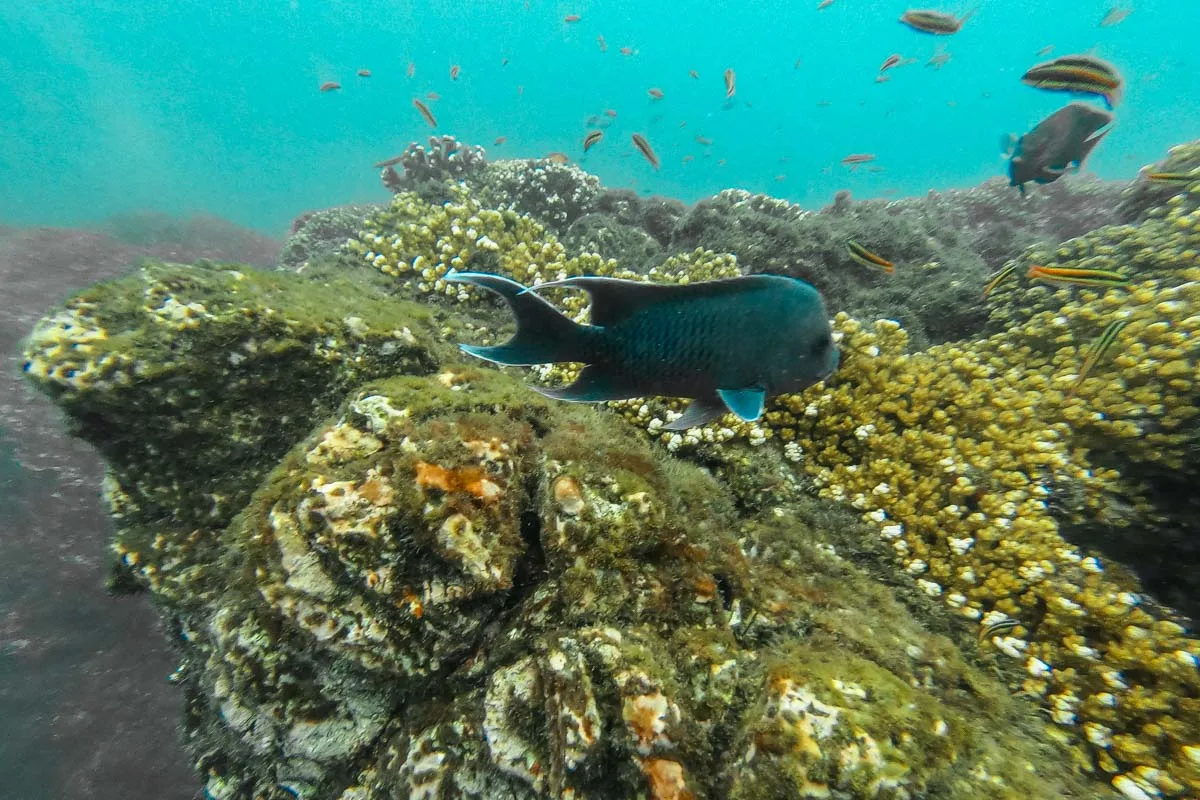
Also known as “Turtle Island”, Tortuga Island is a STUNNING paradise off the Nicoya Peninsula, which is on Costa Rica’s Pacific Coast. The snorkeling here is among the best I’ve done in the entire country and (no surprise) it’s one of the top places to see turtles in Costa Rica!
We found that the water was SO clear – you can get up to 300 feet (100 meters) of visibility! It made it easy to see all the fish and other sea creatures swimming around. We even spotted a small shark! Plus, the island itself tends to be pretty quiet and peaceful, so you can enjoy relaxing on the beach with a coconut in your hand between snorkels.
The main reason that Tortuga Island is so quiet is that it’s quite remote – think deserted island in the middle of a tropical paradise! It’s only accessible by boat, and the best places to depart from are Jaco, Puntarenas, Montezuma, and Paquera, although it’s even possible to take a day tour from San José (but be warned, that will involve a LOT of travel time).
You can book a boat to Tortuga from those ports and rent snorkeling equipment once you get to the island, which costs around $6 USD per hour. Prices for the boat ride can vary though, and we really like having all the details taken care of with a tour.
These are some of our picks for the top Costa Rica tours to snorkel around Tortuga Island!
Tortuga Island from Puntarenas
This private full-day tour from Puntarenas lasts about 7 hours in total, where you’ll take a boat out to Tortuga, which takes about 90 minutes each way. During that time, there’s a good chance you’ll see dolphins – so keep an eye out for them! We love that this is a private tour so you can set the agenda and not feel rushed at all.
On the island, there are lots of activities from seeing the spider monkeys, going snorkeling (gear is included!), and checking out scenic points like the stone arch. Tickets for this tour cost $115 USD and you’ll need to book for a minimum of 4 people – so this is great for families or friends! You can check availability and secure your private snorkeling tour here.
Tortuga Island from Montezuma
Enjoy a full-day snorkeling tour from Montezuma Beach to Tortuga, with a short 45-minute boat journey each way! Pickup is at 9 am and once you arrive at the island, you’ll enjoy two hours of snorkeling through the volcanic reef, home to angelfish, porcupinefish, morays, and so much more!
After you’ve spent some time getting to know the local residents, you’ll be invited onto the white sandy beach to enjoy fresh fruits and a delicious BBQ lunch. This tour costs $80 USD.
Tortuga Island from Paquera
This small-group snorkeling tour departs from the beach in nearby Paquera, which is the closest departure spot on our list for Tortuga. Time will fly by as you take the 20-minute boat ride to explore the beautiful volcanic rock reef!
Lunch is included in your ticket, as well as some free time to explore the island. There’s a beautiful trail to the top of the island which we loved exploring – highly recommended! Tickets for this 5-hour tour cost $55 USD per adult which includes your snorkeling gear and fresh fruit after your swims. You can secure your spot on this tour online here.
3. Cahuita National Park

You’ll find Cahuita National Park on the southern Caribbean coast, near Puerto Viejo, and close to the Panama border. The park was actually set up to protect its reef, which is an impressive 600 acres. Unfortunately, a big earthquake did a lot of damage to the reef in 1991, but it’s still home to 35 species of coral reef and over 135 types of fish, so we’d say it’s still well worth a visit!
The best way to access Cahuita National Park is to stay in the town of Puerto Viejo, which is 17 kilometers (10.5 miles) away. You can also stay in the town of Cahuita itself if you prefer, but there are fewer amenities there, and since Puerto Viejo is so close, we found that to be the better option for us.
If you want to go snorkeling in Cahuita National Park, you’ll have to do it as part of a tour because the reef is protected and no snorkeling is allowed without a guide. Willie’s Tours offers a great coral reef snorkeling trip that lasts for about 3 hours and includes all of your equipment, a training session, fruit snacks, and an experienced local guide.
Your boat will depart from Cahuita’s harbor, which is about a 20-minute drive from Puerto Viejo, and take you to two of the park’s top snorkeling spots where you’ll see amazing animals like lobsters, nurse sharks, moray eels, and tons of tropical fish, of course. The tour only runs during the good visibility months, which, broadly speaking, tend to be March and April or September and October in Cahuita. Tickets for this tour cost $30 USD per person and can be booked online here.
Related Read: Did you know that Cahuita is also a great place to see sloths in Costa Rica? I highly recommend this Cahuita National Park hike and waterfall combo tour if you want to see a sloth in the wild!
4. Catalina Islands

The Catalina Islands are one of the most beautiful places in Costa Rica. They are home to an incredible array of marine life, especially their giant manta rays (which are absolutely incredible to swim alongside, just FYI) and endangered devil rays, known for doing backflips out of the water.
There are also lots of turtles, tropical fish, octopuses, and white-tip reef sharks around. Orcas have even been known to frequent these waters on occasion, although sightings are rare.
The Catalina Islands can be found in the Guanacaste province on the Pacific Coast of Costa Rica, about 30 minutes from the Playa Flamingo marina by boat. Popular places to visit from include some of the best beach towns in Costa Rica like Playa Hermosa, Puerto Viejo, Playa Coco, Tamarindo, Playa Grande, Potrero, and Conchal – so basically, these islands are fairly accessible as Costa Rica snorkeling spots go.
You can’t stay on the islands overnight, so you’ll need to take a day trip from one of these places. We had a fantastic time with the friendly folks that organize this small-group snorkeling tour. You’re sure to have a blast spending in the water swimming amongst tropical fish, manta rays, and even sharks!
This tour departs at 6 am, with free pickup if you are staying in Tamarindo or Langosta. While that may seem early, we really like getting on the water in the morning – then you’re one of the first boats out and get the best location! Tickets for this tour cost $85 USD per person and you’ll need to book for a group of 7-10 people (then you have the boat to yourselves!), which can be booked online here.
5. Marino Ballena National Park

One of our favorite things about Marino Ballena National Park is that you can spot humpback whales here! The absolute best months to see whales are either August/September or January/February. The best snorkeling conditions are around that December to April time, so if you time it right you can see whales and snorkel here!
This is one of the best national parks in Costa Rica and it was created to be a protected area to ensure that whales could migrate safely. “Ballena” is actually Spanish for whale and there’s even a sandbar here on one of the most beautiful beaches in the country that’s shaped like a whale’s tail!
The park protects the coastline around Uvita, a beach town along Costa Rica’s South Pacific Coast. This is where most snorkeling and whale watching tours in Costa Rica leave from.
This part of Costa Rica is known for its excellent snorkeling and diving and is home to over 85 marine species and has the largest coral reef on the Pacific Coast of Central America. Snorkeling here is more focused on marine mammals than tropical fish, although there are plenty of those around, too.
We opted to take this whale watching tour from Uvita, which was led by Anner, an awesome guide with a super impressive knowledge of the park’s marine life. We also got several chances to snorkel and even visited some caves! It was a great way to see whales in Uvita and explore the park. Plus groups are capped at 15, so it’s a small, friendly tour, rather than a crowded, impersonal one.
The tour lasted about 3.5 hours in total, so we had lots of time to snorkel and explore but weren’t too exhausted by the end. Tickets for this tour cost $99 USD and can secure your spot on this personalized tour online here.
Related Read: Snorkeling is hungry work. Luckily, there are so many incredible restaurants in Uvita to try out!
6. The Bat Islands
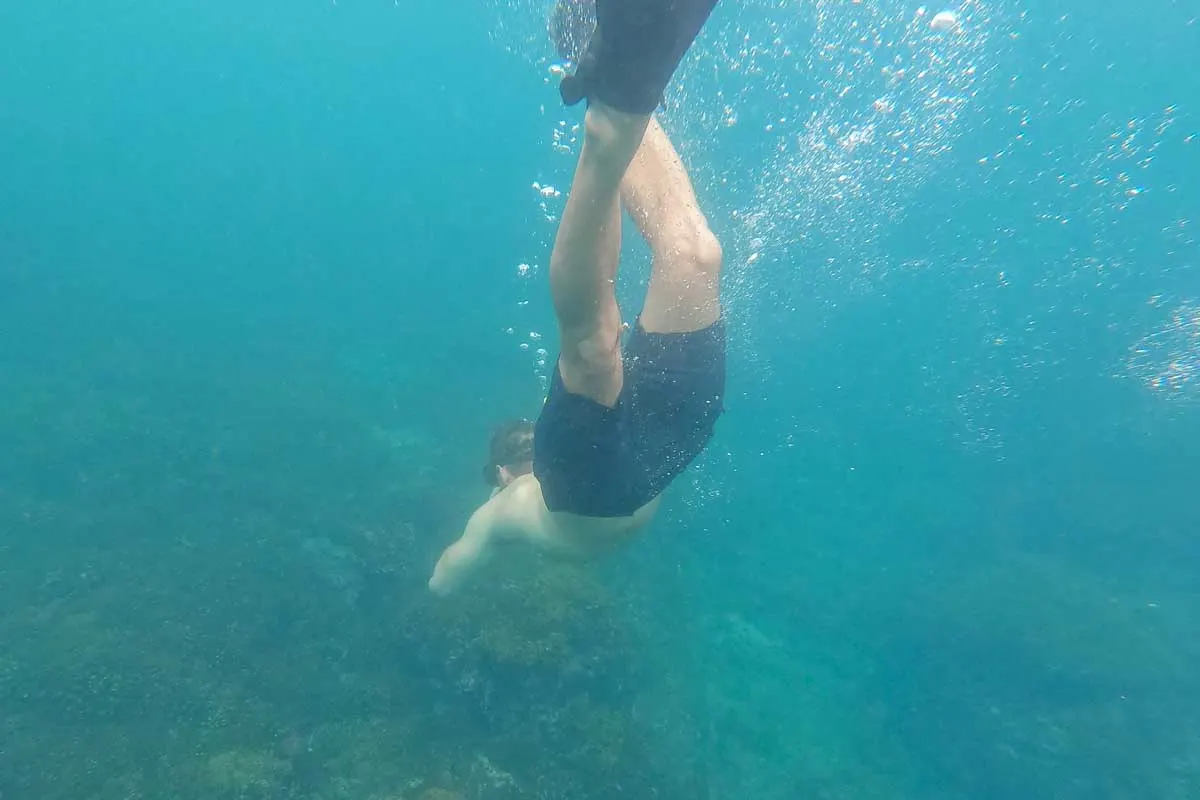
Snorkeling or scuba diving around the Bat Islands really is a once-in-a-lifetime kind of experience! Located in the north of the Guanacaste province, along the Pacific Coast, these islands are home to a variety of marine life but are most famous for bull sharks.
Unlike most shark varieties in Costa Rica, bull sharks are actually pretty dangerous! They can grow up to 3.5 meters (11.5 feet) long and are known for their aggressive behavior. But don’t let that scare you off, as they are very unlikely to attack divers and there has never been an incident recorded on the Bat Islands, despite the fact that divers have been flocking here for decades.
You can’t stay on the Bat Islands, but they are accessible by boat from Coco Beach or if you’re staying in Tamarindo. Legally, you don’t need a tour to snorkel or dive in the Bat Islands, but unless you’ve got your own boat, then you’ll probably need to book one.
In addition to the sharks, the Bat Islands are home to several different types of rays, as well as tropical fish, dolphins, whales, and turtles. So even if you’re not able to dive with the bull sharks, it’s still definitely worth coming here to explore the waters.
Dive with the bull sharks in the Bat Islands
If you want to see the incredible bull sharks at the Bat Islands, then you’ll need to dive! This bull shark experience is designed for advanced divers (you are coming face-to-face with some pretty dangerous animals, after all) and it includes lunch, soft drinks, transport from Tamarindo, or pick up on request.
This is one of the best diving tours around Tamarindo and it lasts for around 10 hours in total. You get two dives, one of which is very deep and another, shallower one. We think it’s a super exciting, adrenaline-pumping experience that you can’t find in many other places in the world, so if you do happen to have your advanced PADI certification, then we say go for it!
Tickets for this tour cost $350 USD per person, which includes the scuba gear you’ll use, as well as lunch and complimentary tea/coffee. You can secure your spot on this action-packed tour here.
Snorkeling tour of the Bat Islands
For those looking for a slightly tamer experience, while still spending time with the amazing marine wildlife, then this 8-hour snorkeling tour is for you. You’ll set off from Playas del Coco, taking a private boat for about an hour out to the Bat Islands. See if you can spot humpback whales and dolphins on the way!
When you arrive at the islands, you’ll go for your first dip in the beautiful blue water, spending time with the colorful tropical fish, turtles, mantas, and so much more! Also included is plenty of water, snacks, fruits, and a beautiful beach lunch. It costs $600 USD to hire out the boat for the day, with a minimum of 2 people and a maximum of 5. You can add extra people on top of this for $80 USD per person.
7. Gandoca-Manzanillo National Wildlife Refuge
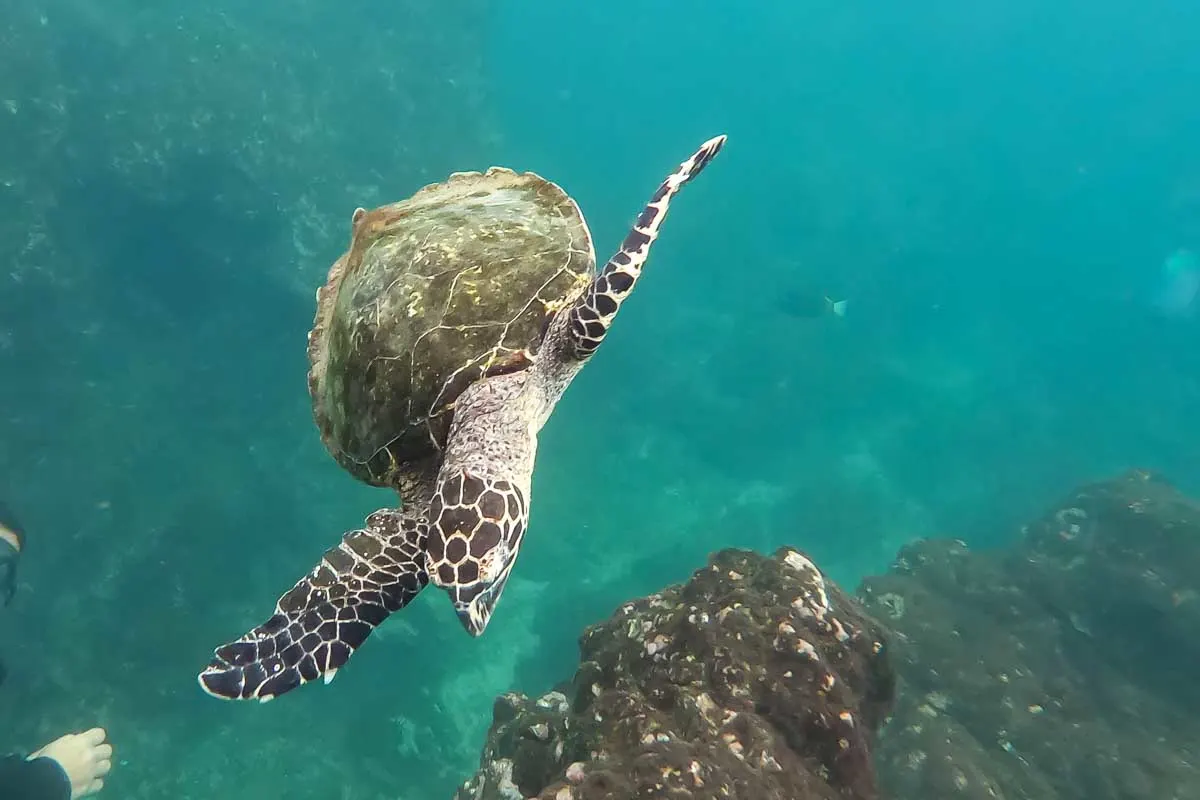
The Gandoca-Manzanillo Wildlife Refuge is a protected area in the south of Costa Rica, next to the Panama border. It covers both land and sea, and is one of the few places in Costa Rica where you can still spot manatees! There are also reef sharks, lobsters, and stingrays around, as well as a ton of vibrant coral and tropical fish.
The refuge is in the town of Manzanillo, about 11 kms (6.8 miles) from Puerto Viejo, which is roughly a 20-minute drive. Talamanca is also close by, and Limón is about 90 minutes away.
We did this 2-hour snorkeling tour of the refuge and it was pretty awesome! It has one of the most vibrant coral reefs in Costa Rica, and the water was super clear. We saw a ton of cool marine life and learned a lot about the area itself, which actually has a very interesting history. Snorkeling equipment and soft drinks are included, and hotel pickup and drop-off are available for an additional fee. You can choose to depart at 9 am, 10 am, or 1 pm, with tickets costing $55 USD.
You can also snorkel right at Playa Manzanillo. We found this beach isn’t as touristy, so it’s a nice escape – especially during the week. It does get more crowded on the weekends with locals who come to enjoy it. We usually bring our own snorkeling gear, although you can rent it nearby if you need to.
Related Read: Looking for where to stay in Puerto Viejo? Check out our guide to the best hotels in the area!
8. Manuel Antonio National Park
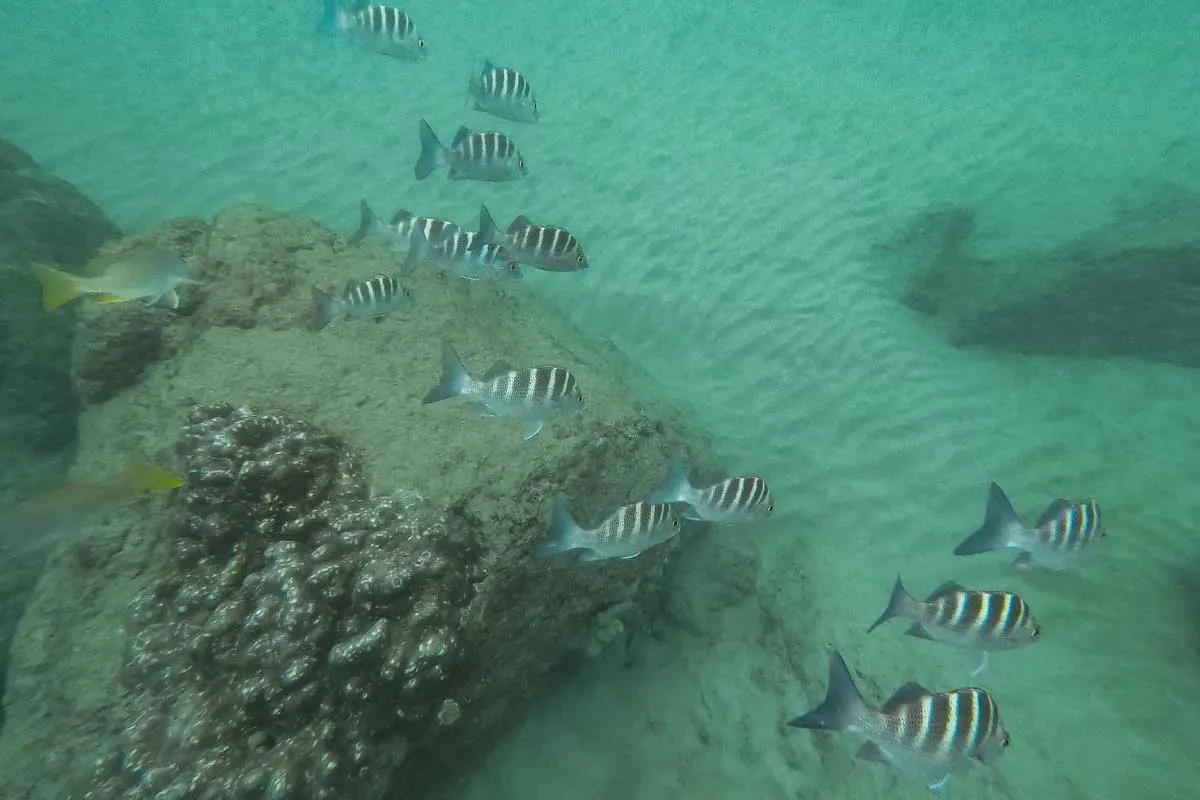
White sand beaches and lush forests are what initially drew us to Manuel Antonio National Park, but we quickly discovered that it was also an excellent place to snorkel.
The park is in the Puntarenas province on the Pacific Coast, halfway between Uvita and Jaco. In fact, it’s about an hour and 20 minutes from the park to either town, so you can stay in Jaco or book a hotel in Uvita. It’s also just 15 minutes away from Quepos, which is where cruises through the park usually depart from.
Manuel Antonio National Park is teeming with tropical fish, and the waters tend to be very calm, which is ideal for snorkeling. It’s actually Costa Rica’s smallest national park, but it’s also one of the best. We loved discovering its vibrant marine life, particularly the incredible multicolored parrotfish!
To go snorkeling in Manuel Antonio National Park, you’ll need to take a catamaran cruise like this sunset tour from Quepos. On this relaxing half-day tour, you’ll head to several snorkeling hotspots and to Biesanz Beach, watching the sunset in a super tranquil spot that is generally regarded as the best place in the park to snorkel.
There’s an open bar on board with unlimited drinks for the entirety of the trip, and you can fill your stomach with the gourmet lunch that’s prepared on board! You can grab your tickets for $95 USD per person, so don’t miss out and book your spot online here.
Is snorkeling in Costa Rica safe?

Yes! There aren’t many dangerous marine animals in Costa Rica’s waters. Even diving with bull sharks at Bat Island is considered to be safe. There have been a few rare shark attacks over the years, but if you stick to the main snorkel spots with your tour group then you should be absolutely fine.
However, as is the case all over the world, you do need to be fairly confident in the water to go snorkeling, and you should wear a life jacket if you’re not a strong swimmer.
The BEST Things to do in Costa Rica
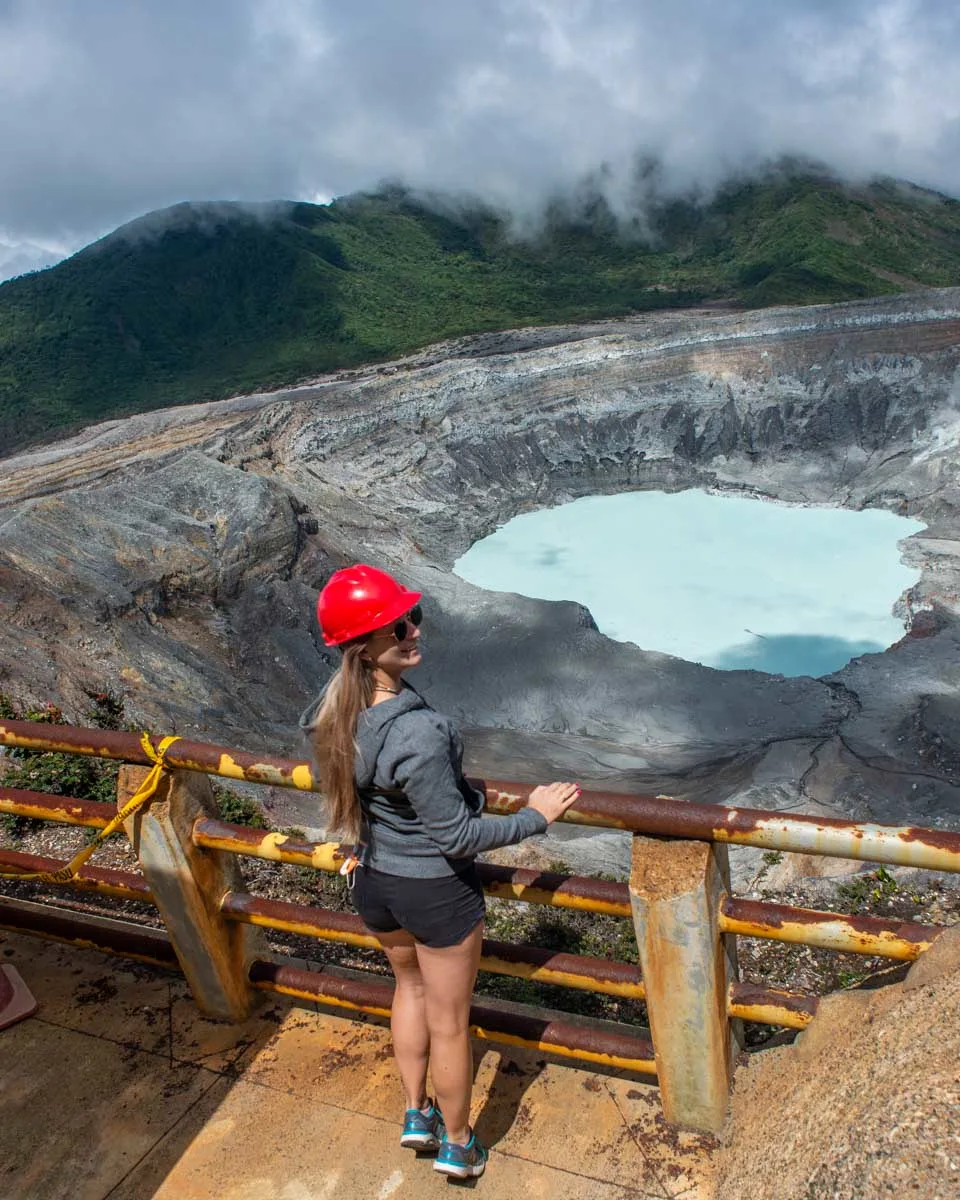
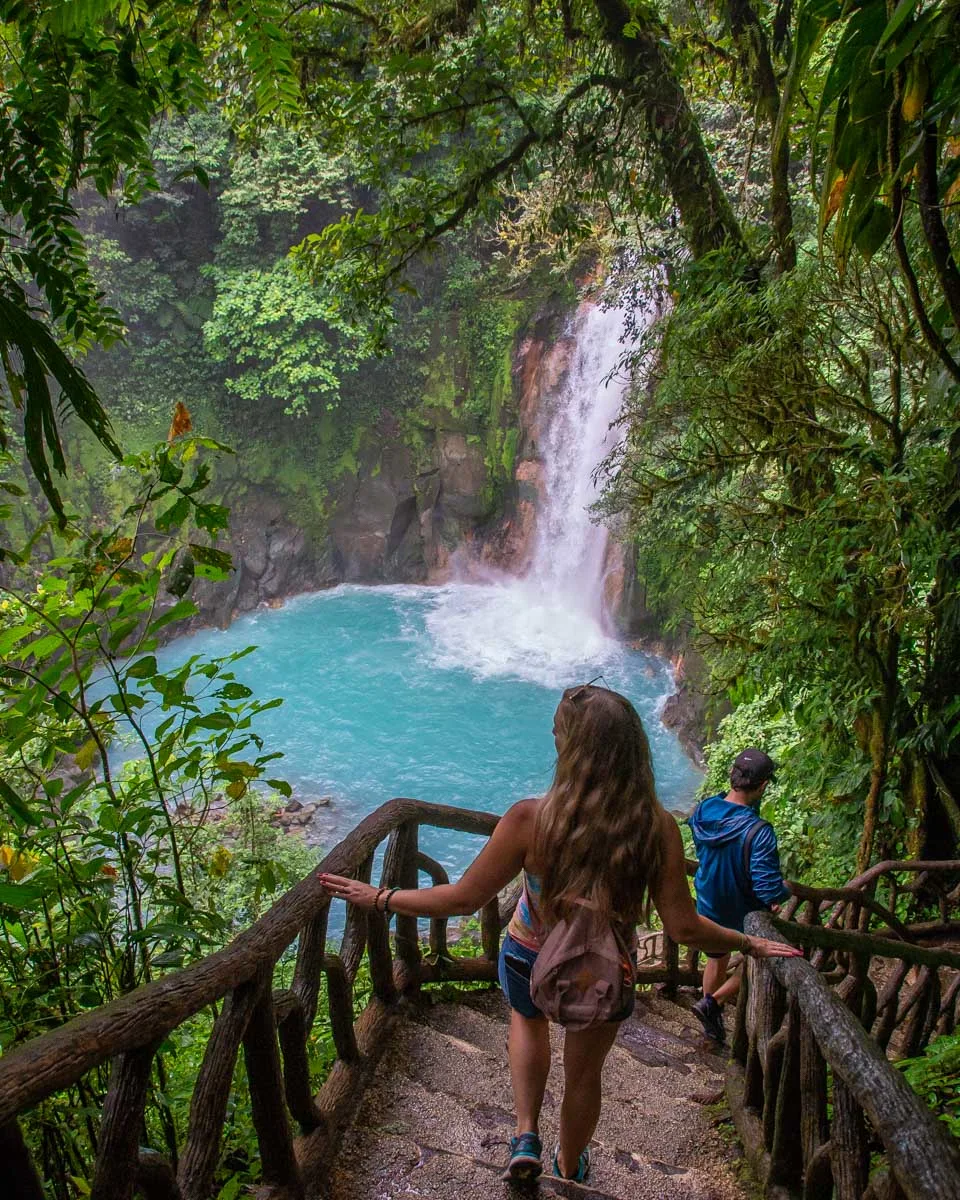
While there are so many fun things to do in Costa Rica, a couple of specific attractions and activities stand out amongst the rest. They are:
Explore Volcanoes
There are some impressive (and beautiful!) volcanoes that you’ll want to check out while you’re here.
Poas Volcano is known for its bright blue crater lake. Poas Volcano is most commonly visited on a day trip from San Jose. This Poas Volcano tour from San Jose is one of the best you can do since it also includes a visit to the La Paz Waterfall Gardens as well as a coffee farm.
Arenal Volcano is also one of Costa Rica’s top attractions. Arenal Volcano is located closest to the town of La Fortuna. You can book this full-day tour from La Fortuna that takes you to the volcano to hike, the famous La Fortuna Waterfall and even a hanging bridge – it’s a full day of adventure!
Chase Waterfalls
La Fortuna Waterfall is one of our favorite waterfalls in all of Costa Rica. You can easily visit it on this full-day tour in La Fortuna that also visits hot springs.
Rio Celeste is another beautiful waterfall that is famous for its bright blue water. Rio Celeste is a popular attraction to visit from Guanacaste Province and this particular tour includes transport from there. Alternatively, you can book this tour from La Fortuna or this tour from San Jose.
See the wildlife
Costa Rica is the place for wildlife lovers! One of the best places to see lots of animals in their wild habitat is at Manuel Antonio National Park. With the help of a guide you will see plenty of birds, monkeys, and even sloths! This particular tour is super popular and also has amazing reviews, so you really can;t go wrong.
There are also lots of wildlife rescue centers around the country that are worth visiting. The Jaguar Rescue Center in Puerto Viejo is one of our favorites as well as Rescate Wildlife Rescue Center in San Jose where you can book this private tour.
Getting Around Costa Rica

How you choose to get around Costa Rica is one of the biggest decisions you’ll make when planning your holiday here! How you do it depends on your budget, travel style, and comfort level.
Renting a Car
Without a doubt, the number one way to explore Costa Rica is in a rental car. We book rental cars on the Discover Cars website as we have had good experiences with them in the past.
One of the things you need to watch for when renting a car in Costa Rica is the mandatory insurance that the government requires you to have. There are a lot of very cheap rentals that don’t include this mandatory insurance (TPL) in the original booking price, but there are also ones that do. To avoid additional surprise charges when you pick up your rental car, be sure to rent a car that includes the mandatory insurance when you book.
Thankfully, on Discover Cars it’s easy to tell apart the companies that include the mandatory insurance and those that don’t. The trick is you can’t pick any car on their website. In the picture below, you can see this rental car, with pick up in Jaco, includes the TPL. That means the mandatory insurance is included in the price. Any cover you get above that is extra.
Of course, I still suggest getting the full coverage offered by Discover Cars, which covers you even more.
You can browse cars on Discover Cars here.
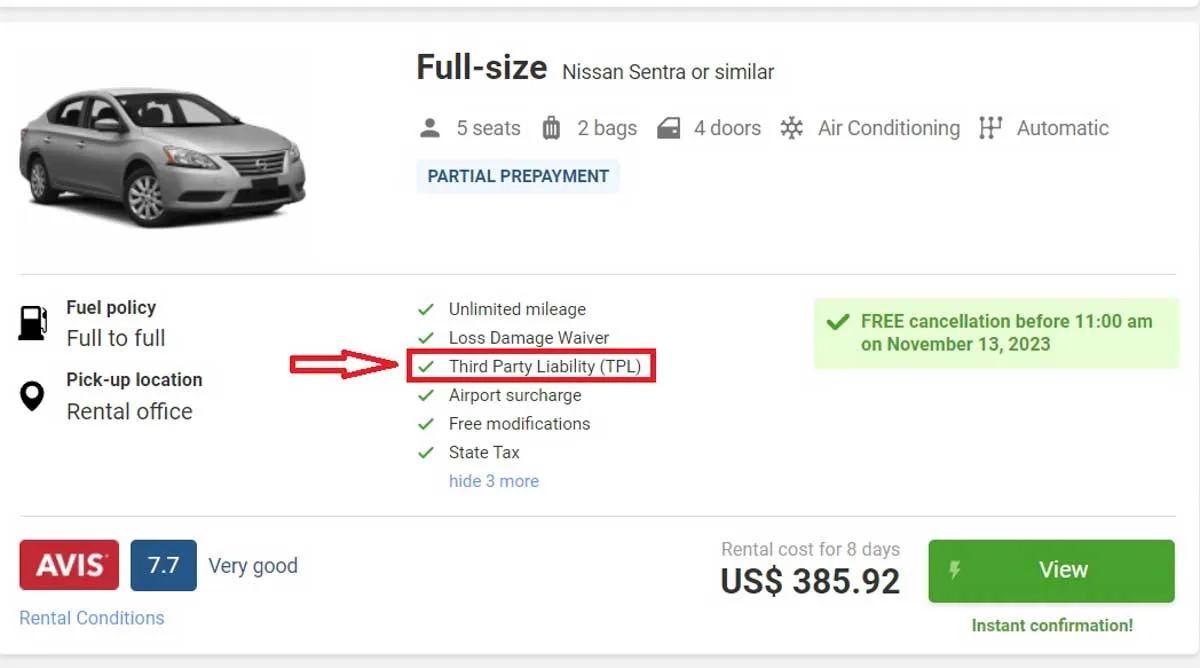
Book Shuttles
If renting a car isn’t in your budget, you don’t feel comfortable driving in Costa Rica, or you just don’t like driving, shuttles are the next best option. There are hundreds of shuttle routes available all over the country, and they are very affordable.
Shuttles in Costa Rica are specifically for tourists and often include pick up and drop off at your selected hotels and airports. The drivers also speak some English, and the vehicles have air conditioning. You’ll also be guaranteed a seat when you book a shuttle (which isn’t the case with the public bus system.)
To get the best price, use the website Bookaway. They compare all the offers and prices of shuttle companies in Costa Rica so you get the best price! Honestly, we have saved so much money using Bookaway!
You can search for shuttles online on Bookaway here.
Public Bus
Lastly, you can use the public bus system. On short journeys, such as from San Jose to La Fortuna or Uvita to Manuel Antonio, this system is great. However, the longer the journey the more hassle and time spent on a bus. It’s undoubtedly best to save the public bus in Costa Rica for short and straightforward trips!
The public buses are definitely the cheapest way to get around Costa Rica, but they are not always very reliable and schedules often change without notice and delays are to be expected. The buses can also be very crowded and hot – so just be prepared!
It’s also good to speak some Spanish if you plan on riding the public bus since most drivers and ticket booth operators don’t speak English.
Pura Vida!
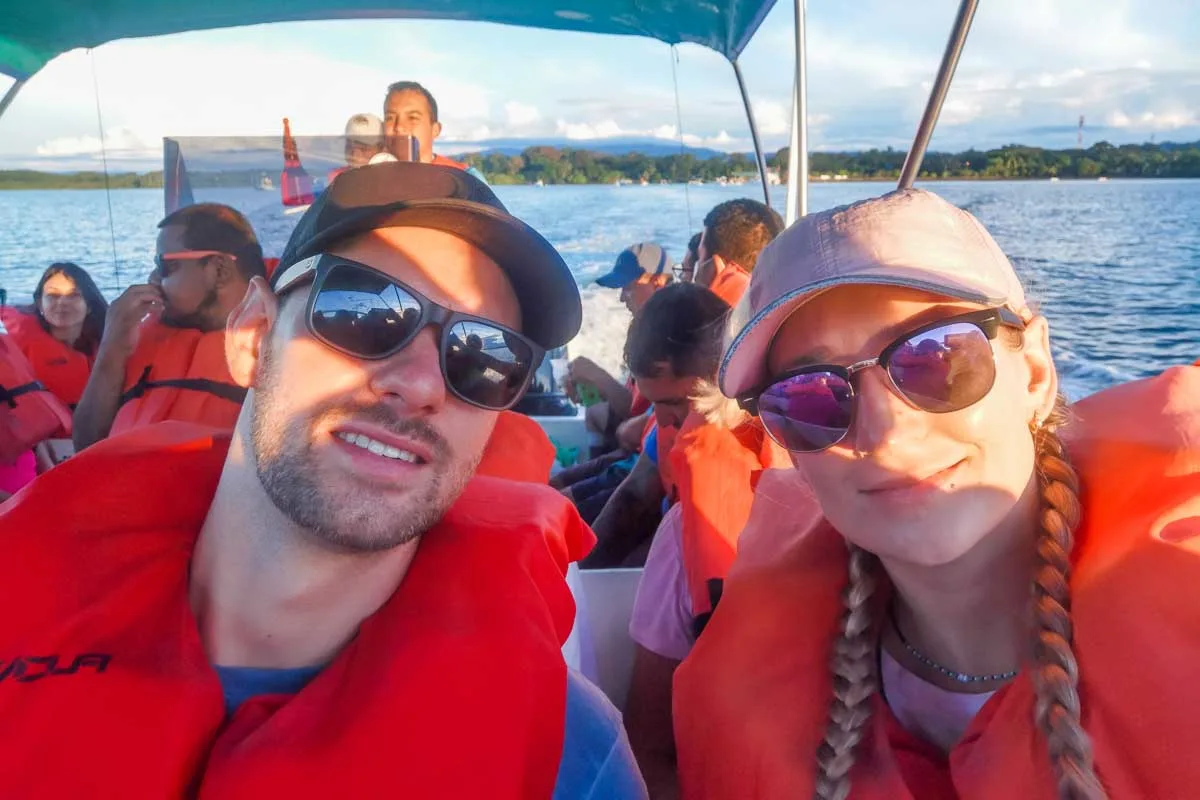
In our opinion, Costa Rica is one of the best places in the world to snorkel – I mean, where else can you see such an abundance of marine wildlife? We hope you’ve enjoyed reading this blog and that it’s helped you plan your own snorkeling adventure.
Feel free to leave a comment below about what you plan to do here in Costa Rica. We’ve also included some other helpful guides below to help you organize your trip:
BEST all-inclusive resorts in Costa Rica (our unbiased opinion!)
